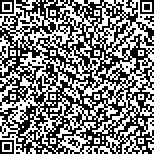| 摘要: |
| 2007 年 6 月经由专项航次对黄海冷水团及邻近海域共 48 个站位(北黄海 17 个, 南黄海 31个)的小型底栖动物组成、丰度和生物量及沉积环境进行了研究。所调查站位的小型底栖动物平均丰度达(2195 ± 1599) ind/10cm2, 平均生物量为(1843 ± 1291) ug dwt/10cm2, 冷水团内的平均丰度较冷水团外站位低约 25%, 生物量低约 18%。北黄海的小型底栖动物现存量是南黄海的 2 倍多, 平均丰度分别为(3410 |
| 关键词: 黄海冷水团, 小型底栖动物, 丰度, 生物量 |
| DOI:10.11693/hyhz201103004004 |
| 分类号: |
| 基金项目:中国科学院知识创新工程重要方向项目, KZCX2-YW-417; 国家自然科学基金项目, 40576072; 40706047。 |
附件 |
|
| AN INVESTIGATION ON THE BIOMASS, ABUNDANCE AND DISTRIBUTION OF MEIOFAUNA UNDER THE COLD WATER MASS AND ITS SURROUNDING AREAS OF THE YELLOW SEA |
|
WANG Jia-Dong1,2, LEI Yan-Li1, XU Kui-Dong1, DU Yong-Fen1
|
|
1.Institute of Oceanology, Chinese Academy of Sciences;2.Graduate University, Chinese Academy of Sciences
|
| Abstract: |
| Composition, abundance, biomass and environmental parameters of meiofauna were investigated based on samples collected from 48 stations (including 17 and 31 stations in the northern and southern Yellow Sea, respectively) in the area dominated by Yellow Sea Cold Water Mass and its surrounding areas in the summer 2007. The mean abundance and biomass of meiofauna in the sampling stations were (2195 ± 1599) ind/10cm2 and (1843 ± 1291) ug dwt/10cm2, respectively. The mean abundance of meiofauna in the 29 stations in the area dominated by the cold water mass was ~25% lower than that in the other 19 stations, and the biomass was ~18% lower. The abundance and biomass in the north Yellow Sea were ~2 times more than those in the south Yellow Sea, i.e., the abundance was (3410 ± 1578) ind./10cm2 and (1529 ± 1121) ind./10cm2, respectively, and the biomass was (2766 ± 1344) ug dwt/10cm2 and (1336 ± 901) ug dwt/10cm2, respectively. Among the 18 main meiofaunal groups that we examined, free-living nematodes were the most abundant and contributed 87.9% to the total meiofaunal abundance, which was followed by copepods (5.9%), nauplii (2.9%), polychaetes (1.3%) and kinorhynchs (1.2%). Nematodes contributed to 42% of the total meiofaunal biomass in the Yellow Sea, followed by polychaetes (22%), copepods (13%) and nauplii (12%). Moreover, ~79% of the total meiofauna lived in surficial sediments (0—2 cm), 17% lived in 2—5 cm depth, while only 4% were found in 5—8 cm depth. The abundance and biomass of total meiofauna showed significant positive correlation with chlorophyll a concentrations, and significant negative correlation with water depth, sediment organic matter concentration, and median diameter of sediment grains. In addition, meiofaunal biomass showed significant negative correlation with the content of silt and clay in the sediments. These results suggested that sediment organic matter concentration in the nearshore area were lower than those in the central area of the Yellow Sea. This phenomenon was likely caused by the annular circulation in the Yellow Sea in summer. The standing crop of meiofauna in the northern Yellow Sea was the highest ever recorded for China’s seas. This high standing crop is consistent with high productivity in the Yellow Sea. Furthermore, meiofaunal standing crop was higher along the river plume from estuary of the Changjiang(Yangtze) River, which brought abundant nutrients to this area. |
| Key words: The Yellow Sea Cold Water Mass, Meiofauna, Abundance, Biomass |
